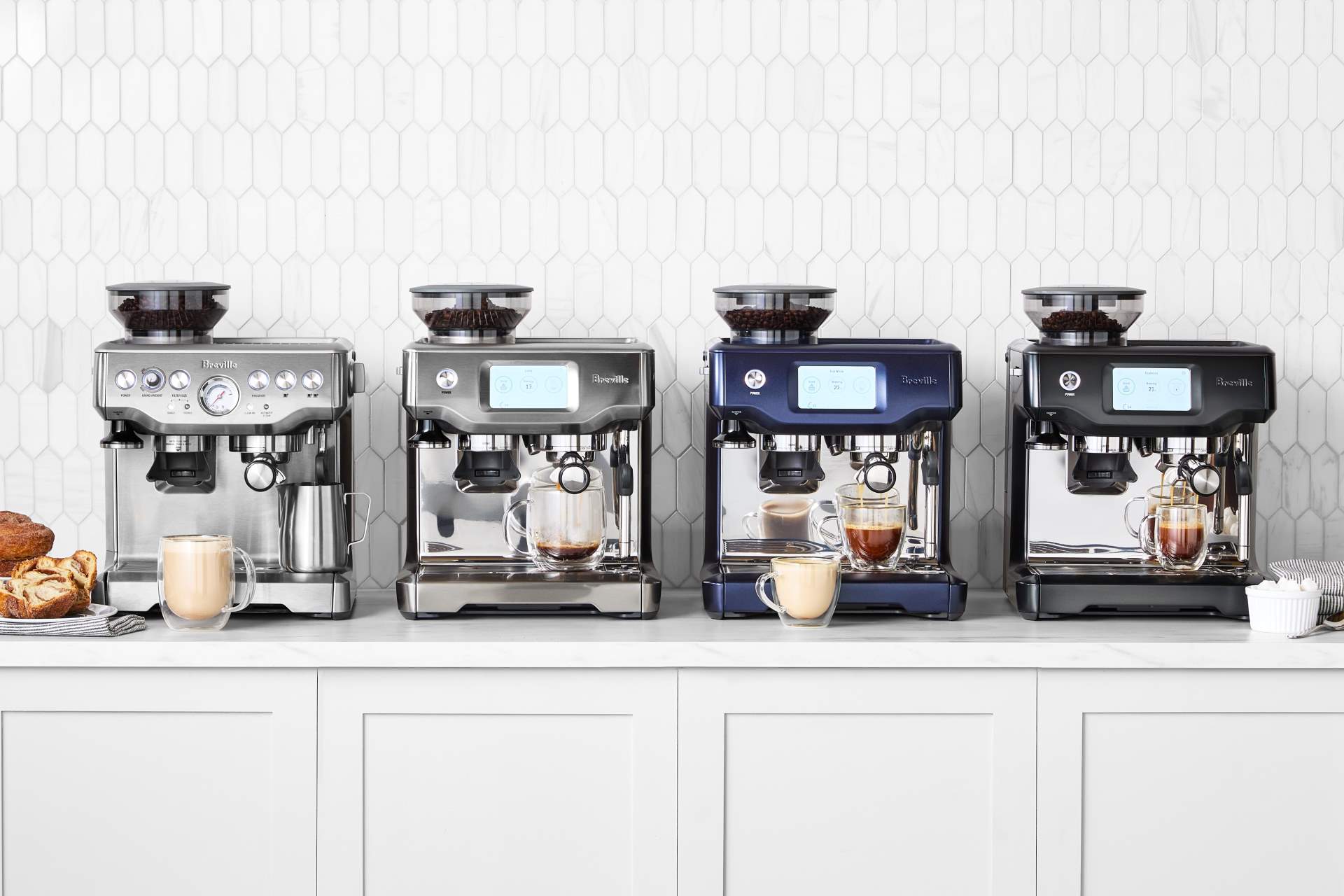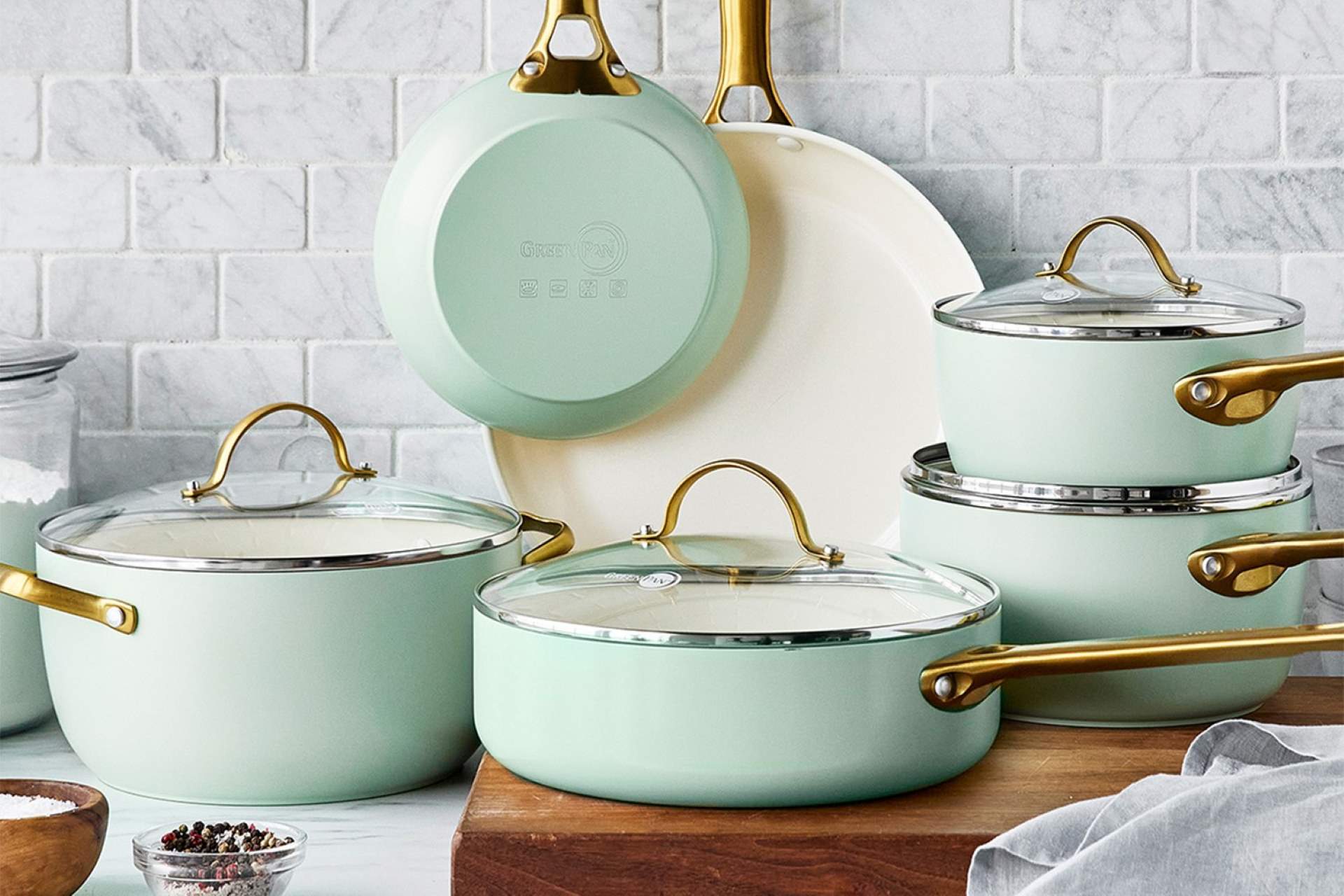Your morning brew, made by you, perfected by Breville.


In the pursuit of healthier cooking options and elegant kitchen aesthetics, ceramic pans have become increasingly popular, securing a beloved spot in the modern cook’s kitchen.
Celebrated for their nonstick surfaces that allow for less oil use and easy cleaning, ceramic cookware brings together the best of both worlds: convenience and health. And beyond their functional advantages, these pans boast vibrant colors and sleek designs, elevating the visual appeal of any kitchen space.
Yet, as their popularity grows, so does curiosity about their durability and overall lifespan. In this article, find out how long ceramic nonstick pans truly last and learn about factors influencing their durability as well as tips to extend their life.
Hungry for more? Update your cookware with a ceramic nonstick skillet or sauté pan! Ideal for delicate dishes like eggs or fish, these durable, nontoxic pans will have you cooking up a storm.
If you’re wondering how long ceramic nonstick pans last, it’s important to note that the lifespan of a ceramic pan can vary significantly based on several factors, including the quality of the pan, how it is used and how it is cared for. On average though, a high-quality ceramic pan used with proper care can last anywhere from 1 to 5 years.
It may come as a surprise that ceramic pans have a shorter lifespan than other cookware types, such as stainless steel or cast iron. But a variety of factors play a role in this distinction. It’s primarily due to the ceramic coating, which can chip, scratch or wear away over time, especially with frequent use or improper care.
Other factors such as cooking at high temperatures, using metal utensils and cleaning with abrasive materials can further exacerbate this wear and tear. Additionally, ceramic pans are more susceptible to thermal shock, which can lead to cracks or damage to the coating, shortening their lifespan.
Despite these challenges, with careful handling and maintenance, ceramic cookware can still be a valuable part of a kitchen’s cookware collection.
The longevity of ceramic nonstick pans is influenced by several key factors, from the quality of their manufacturing to the ways in which they are used and cared for. Understanding these elements can help you extend the life of your ceramic cookware, ensuring it remains a valuable asset in your kitchen for years to come.
Quality of the pan
The manufacturing process and the materials used to create a ceramic pan play a critical role in its overall durability.
High-quality ceramic pans typically feature a more robust ceramic coating that can withstand wear and tear better over time. The thickness of the coating, the quality of the base material (such as aluminum or stainless steel) and the manufacturing process itself (such as the firing temperature of the ceramic) all contribute to the pan’s resilience against scratches, chips and heat damage.
Usage frequency
How often a ceramic pan is used along with the cooking methods followed can directly impact its lifespan. Regular use, especially at high temperatures, can accelerate the wear of the ceramic coating, too.
Cooking techniques that require minimal heat and gentle handling—as opposed to frequent, high-heat cooking methods that put more stress on the ceramic surface—can significantly prolong the pan’s effective life.
Care and maintenance
The way a ceramic pan is cleaned and stored can either preserve its condition or lead to its premature decline. To maintain the integrity of the ceramic coating, it’s recommended to clean the pan gently with a soft sponge or cloth and mild detergent, avoiding abrasive scrubbers or harsh chemicals that can scratch or erode the surface.
Proper storage is also crucial; stacking pans without protective layers can cause scratches and chips, so using pan protectors or hanging pans can prevent damage.
Related: “How to Clean and Care For Your Nonstick Pans”
Cooking utensils
The choice of utensils used with ceramic pans significantly affects their longevity. Metal utensils can scratch and chip the ceramic coating, compromising its nonstick properties and leading to further damage over time.
To maximize the longevity and performance of your ceramic pans, it’s essential to adopt practices that minimize wear and preserve the integrity of the ceramic coating. Here are 5 key strategies to help extend the life of your ceramic cookware:
Gentle heat use
The ceramic coating on your pans thrives under medium to low heat. Excessive high heat can weaken the coating over time, leading to deterioration and loss of nonstick properties. Cooking at lower temperatures not only preserves the coating, but also promotes even cooking, ensuring your meals turn out perfectly every time. It’s a simple adjustment that can significantly prolong the life of your pans.
Avoiding rapid temperature changes
Ceramic pans are susceptible to thermal shock, a condition where rapid temperature changes cause the material to crack or the coating to degrade.
To prevent this, avoid placing a hot ceramic pan under cold water or in a much cooler environment immediately after cooking. Allow the pan to cool down naturally or under lukewarm water to mitigate the risk of damage.
Proper cleaning techniques
Proper cleaning is vital to maintaining the ceramic coating’s effectiveness and appearance. Use a soft sponge or cloth and mild soap to clean your pans, steering clear of abrasive pads and harsh chemicals that can scratch the surface. For stubborn residue, soak the pan in warm, soapy water before cleaning.
The right utensils
To safeguard the ceramic surface, opt for utensils made of wood, silicone or plastic. These materials are much less likely to scratch or chip the coating compared to metal utensils. By choosing the right tools, you not only protect your pans, but also ensure they continue to provide a superior nonstick experience for longer.
Handling with care
While ceramic pans are durable, they can be susceptible to chipping if dropped or knocked against hard surfaces. Handle them gently and store them in a location where they’re less likely to be bumped or dropped.
Despite your best efforts to care for and maintain your ceramic pans, there comes a time when they must be replaced to ensure the safety and quality of your cooking. Knowing when to retire your cookware is crucial for both culinary results and health reasons.
Here are key signs that indicate it’s time to replace your ceramic pans:
Hungry for more? Update your cookware with a ceramic nonstick skillet or sauté pan! Ideal for delicate dishes like eggs or fish, these durable, nontoxic pans will have you cooking up a storm.
Join The Conversation